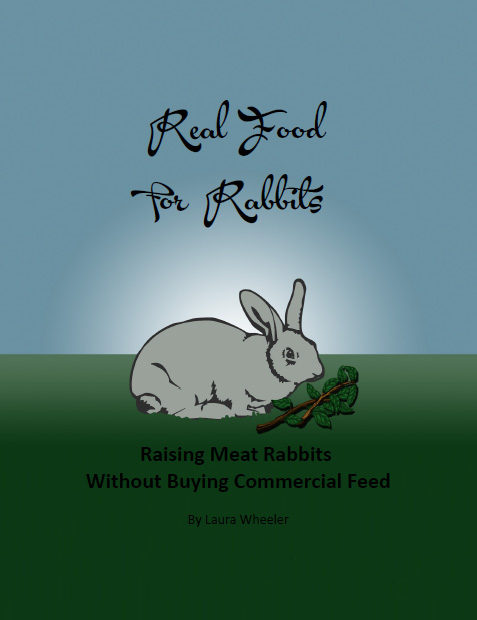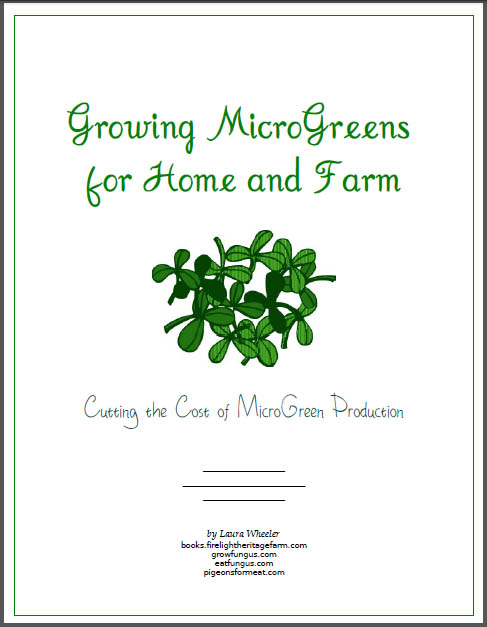 Click to Download Your Free Heritage Pickling and Culturing e-Book Now!
Click to Download Your Free Heritage Pickling and Culturing e-Book Now!
Instant Download, NO Registration Required!
Getting the Most Out of Older Hens
Commercial laying facilities have taken over the chicken industry. They've even taken over backyard chicken raising instructional sources, and many people have been taught, and believe, that hens "do not lay well" after the second year.
I am here to teach you otherwise!
I have heard many people repeat the myth that after a hen turns 2, she isn't worth keeping anymore. There are several reasons why people believe this myth.
1. Because egg production is highest in the second year, and declines after that, many people assume it declines radically. The only statistics I could find on this were that a hen generally produces half the amount of eggs by the time she is 4 or 5 years old. Third year layers generally lay very strong, unless they are high strung production layers, and even then, they will still lay enough in the third year to justify their feed and care. Otherwise, she'll be producing 1-4 eggs per week in her 4th to 5th year, depending on the breed, and on her overall health.
2. Commercial hens are pushed with light and heat, through their natural molt, until they are worn and losing productivity. Many people who buy hens for egg laying are not even aware that hens DO naturally molt, since most will not do so their first year. By the time winter starts in on the second year though, and the light levels start to decrease, they'll be needing to molt. This is nature's way of revitalizing their feathers so they stay in good shape and help them stay warm and dry (I feel it is pretty unfair to deny them the opportunity to do that when I expect so much from them). Hens that are pushed more, will eventually molt anyway, in spite of conditions. Hens are meant to molt, and when they do, egg production will stop so they can use their energy for feather production (a little extra protein at this point helps them refeather more quickly). When they are done molting, they will start laying again, if they are in acceptable conditions and have sufficient light. But the molt, and subsequent cessation of egg production, often persuades new chicken owners that the hens are done, and that hens are "no good" after they molt!
3. Most people do not know how to tell when a hen is laying, and when they are not. So if the high productivity hens start dropping out in the third year, they don't know which are laying, and which are ready for the stew pot. Learning how to tell which hens are still productive, and WHEN to tell, can help you weed out the ones that do fizzle out early, and keep the ones that will keep laying strong into their middle age.
4. Hens that have been under lights year-round will fizzle out sooner than hens that are given the break in the winter that nature intended. Hens that are given amazing coop conditions (which are NOT what you think!) will produce a moderate number of eggs in the winter, they'll molt and take the 1 month break for which their unrelenting production has surely entitled them, and then they'll lay on and off until spring when they'll pick right back up again. They will do this WITHOUT supplemental light, or heat, even in cold climates, if their housing provides for their needs.
5. Hens that are allowed access to good sources of animal protein (bugs count), and good fruit and vegetable forage, will produce more, and be productive later in their lives. Good nutrition just means higher productivity. And before you say that commercial poultry feed is "balanced" and that you should not diverge from it in case you get things out of balance, I say, Poppycock! Commercial chickens lay eggs with the PUNIEST yolks, a sign of LOW protein and poor hen health. Commercial chicken feed is calculated to have the LOWEST amount of protein (the more costly part of the feed), that can still be counted on to reliably produce eggs. It is NOT AT ALL designed for optimal hen health, but rather, to operate the chicken egg machine for the term of highest productivity, at the lowest possible cost and least possible inputs, after which the machine is retired (translate "butchered") and replaced with a younger model. If you want to replicate that system, by all means, use commercial layer feed and nothing else. If you want big tasty eggs with the biggest yolks you've ever seen in an egg, then feed them more bugs, and lots of fruits and veggies and sprouted grains. You'll see the difference in the size of eggs, and in the number of eggs!
We were given some two year old hens that had stopped laying. We brought them home, and stuck them into an open air coop. Within three weeks (the usual adjustment time for hens that have been traumatized by a long move), we began gathering a trickle of eggs. Another month later, half the hens were laying daily. We brought them home the day after Christmas, and they did this in an unheated coop, with no supplemental lighting, in January and February.
The open air coop taught us a great lesson about housing chickens. They don't need "14 hours of light" to lay well. They need SUNLIGHT.
This coop has a dirt floor. It is ancient. So ancient that we had to shore up rotting timbers, patch numerous holes in the roof, and cover various holes in the wire front before we could put the chickens in and be sure they could not escape. With that, one managed anyway, and we made another round of repairs. When we brought in guinea fowl, we had to repair again, because they can get out through holes much smaller than chickens can! Did I say the coop was old?
Old it may have been, but this coop was built by someone who used great wisdom in the design. It is, by the way, a classic early 1900s chicken coop. The kind that saw millions of people through the Depression, in every state in the US, including Alaska.
The coop is enclosed on three sides. It has two rooms (a particularly nice feature that has saved our bacon many times). The first room has the door on one side of the front, and an open air window on the other side - which means, the wall only goes up halfway beside the door, and the rest is covered with chicken wire. The larger side of the coop has a half wall, and chicken wire all across the rest of the front.
We wondered when we put the chickens in if they'd be warm enough. And our roo did have some frostbite on his wattles. But they have not only survived, but THRIVED in this coop, while there was snow on the ground, and frozen water buckets, and the odd frozen egg. The chickens managed to continue to lay some anyway, even in the bitter cold of the high mountain valleys in the middle of the Rockies.
The key, we learned, was in the design.
The open air side faces SOUTH. All those open sections catch the sun, which shines on that dirt floor, and warms it up. The chickens have dug some holes in the sunny spots, and they nestle down into them and sunbathe, laying over on their sides to catch the sun all day. The sun warms the floor, and they pad around in full sunlight through most of the hours of the day. The coop is very warm in the daytime due to the sunlight. It is warmer at night than it would otherwise be, due to the heat retention in the floor where the sun has shown.
This effect from the sun does not happen in contemporary coops. Once you put glass in, people put in only very small windows due to the cost, and even a small window can overheat a coop on a sunny day. You lose all that gorgeous southern sunlight, and your hens do not have sufficient light in the coop to benefit from it on cold days when they do not want to venture out. The coop may warm up, but the floor, specifically, does not warm up as well as it does in an open air coop, since the floor tends to remain in the shade all day.
If we were in a windy area, I'd use glass windows across the lower half of the front open area, and wire on the top. But other than that, I've seen that claims regarding open air coops are not based on wishful thinking. The open air coop really works, and it works in ways I would not have thought of until I saw it. Even on very windy days, the hens, ducks, and guineas don't seem to huddle in the corners much except when they are sleeping. They move to the smaller side where it is a little less drafty (but not by much) for night.
With all that sunlight though, our hens laid well in spite of having no supplemental heat or light. We did see drops in egg production on very cold days, and increases on warmer days. But they still laid sufficiently through the winter to earn their keep and to know which hens were keepers in the spring.
So that was the biggest thing we learned. Plenty of sunlight will keep hens happily laying without the fuss and danger of supplemental lighting in a coop. And insulation, or supplemental heat in a coop is entirely unnecessary, and counterproductive in keeping your poultry resilient and self-sufficient.
Besides what YOU can do to keep your hens more productive, older hens have several advantages, and if you USE those advantages, they can be an asset to your flock. If you just keep them around because you are opposed to culling, then you are feeding a mouth and not getting anything in return.
1. Older hens can lay larger eggs. Yep. Our average egg size in our flock of 2+ year old hens is Large, with more than half tipping into the Extra Large category. Some of these girls are popping out eggs the size of duck eggs every day.
2. Older hens are your hardiest birds. If you want to raise chicks from good hens, the ones that lay longest and thrive through the years (do not succumb to disease or predators) are the ones you want to keep for breeders. To breed this in though, as well as long term production, you have to keep them for 4-5 years and really see what they do in those later years, whether they are still laying early in the season and late in the season.
3. Older hens are more likely to go broody. YES, you WANT a broody hen! If your older hens want to raise chicks, LET them. They will save you the cost of chicks, save you the trouble of brooder setups, and raise chicks that are self-sufficient and hardy. Let the older hens produce and raise their replacements. It is how nature is supposed to work!
4. Once a bird is past a year in age, they generally are not going to decline much more in meat quality, so you lose nothing by letting them produce for another year. They do not decline in meat quality, but they do increase in survivability. The more older animals you have in the flock (older... not ancient and disabled), the more stable the flock becomes where threats are concerned.
So how do you tell when a hen is past her prime and no longer worth keeping?
There are a couple of indicators, but the easiest is the color of the comb. We also notice that the chickens in lay are floofy hipped, and the ones not laying are skinny hipped. Think Chicken Run! When we got this last batch second hand, they were all skinny hipped and their combs were pale pink and dry looking. But the feathers around their butts fluffed out more to the side, one by one, at about the same rate that their combs reddened and the eggs started appearing in the nest.
Now that you know, how do you USE this information?
Well, just because a chicken is not laying NOW, does not mean they are done! This is the big catch to this. Some people will cull every pink combed hen in the winter because they are not laying now. Be patient, because pink combs in winter does not equal end of life.
Sometime around March, or April, if you are not getting enough eggs, go through and look for pink combs, and cull them if you are aiming for only keeping hens that lay strong through the spring, summer, and fall. If you want to be more lenient, or if you are in a particularly harsh climate, you can wait until May. But ONLY cull when they SHOULD be laying, not when they naturally should NOT be laying.
- A bright red, shiny comb tells you that they should be producing close to the top of their production.
- A reddish comb with pinkish tips means they are struggling, likely laying on and off, and this is what you will see when they are coming back from a rest, or heading into a molt.
- A pink comb with a blush of warmer color at the bottom means they are probably not laying, but getting close.
- A pale pink comb means they are too young to lay, or that they have stopped laying and are not yet ready to gear up yet.
- Dry and whitish or grayish tips means they are in pretty poor shape and probably are not well nourished or that they have other issues interfering with their ability to be productive.
I want my animals to be as productive as they can, but their ability to do so requires a partnership between us, and them. So we are determined to learn as much as we can about how to give them the best chance of producing what we need from them. Lethal culling is a last resort. If I can make a small adjustment and extend their productivity, I will. If I cannot, then we will find another way for them to put food on our table, and we'll send them to the block. That is just the reality of farming.
The more I have watched the responses of our flocks though, the more I've realized that much of what they need is for things to be MORE natural, not less.
So when people start talking about "managing" their hens, and all the "do" for them to "keep them productive", my first approach is to see how much I can accomplish by backing off and letting them be the animals nature intended them to be.
So far this has produced some very impressive results in all of our animals.
We won't be slaughtering chickens routinely at the age of 2, or 3, or even 5.
But I am watching every day for a broody, and the minute we have one, we are going to let these hens provide us with the advantages that we want from them! And in the mean time, we'll be enjoying extra large eggs with monstrous yolks, and we'll keep feeding them well so they keep producing them.








